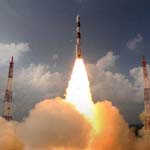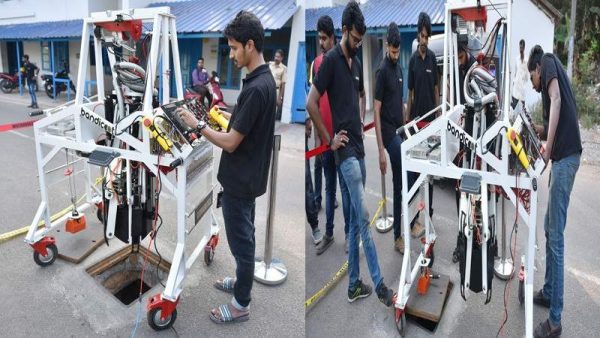
India a step closer to Mars
Mars Orbiter Mission is India’s first interplanetary mission to planet Mars with an orbiter craft designed to orbit Mars in an elliptical orbit. The Mission is primarily a technological mission considering the critical mission operations and stringent requirements on propulsion and other systems of spacecraft.
One of the main objectives of the first Indian mission to Mars is to develop the technologies required for design, planning, management and operations of an interplanetary mission.

Picture Link : http://bit.ly/YM49eH
Around in thirty four days, Mars orbit mission (MOM) aircraft will be entering mars orbit with an effort of a group of scientists sitting in the northwest Bangalore and will not be any more visible from earth.
To reduce the speed of travelling aircraft now 22km/sec to 1.6km/sec would be challengeable to the scientists in order to satisfy the rules of gravity of Mars for entering the spacecraft into the desired orbit.
“Right now MOM or Mangalyanis travels in only in one direction, if we just fire the engine, it will add to the velocity. So, we will have to re-orient it to look at the opposite direction and then fire the engine. What this does is, it will push the spacecraft in the opposite direction and thereby reduce velocity,” a senior scientist said.
If this attempt succeeds, India will be the first country to wear the crown of success on its first attempt and fourth to reach Mars orbit. Other countries like US, Russia, China, Japan, and Europe have also tried it before but no one ever succeeded in their first attempt. It took six attempts to succeed for US and ten attempts by Russia.
MoM was launched into earth’s orbit on November 5 2013. The Mars Orbiter Mission probe lifted-off from the first launch pad at Satish Dhawan Space Centre (SHAR), Sriharikota in Andhra Pradesh and took 23 days in launching and started on 28th October 2013.

Picture Link : http://bit.ly/YM4azo
The total project cost may be up to INR 4.54 billion (US$75 million).The satellite costs INR 1.53 billion (US$25 million) and the rest of the budget has been attributed to ground stations and relay upgrades that will be used for other ISRO projects.
Let’s know a bit about spacecraft:
Polar Satellite Launch Vehicle (PLSV) Polar Satellite Launch Vehicle-C25 (PSLV-C25) standing around 44 meters tall and weighs around 320 tones.
• The spacecraft carries 14.49 kg of scientific payload on- board.
• Total weight: 1,350 kg
• Science payload weight 14.49 kg
• Fuel load 850 kg.
Following payloads are on the spacecraft.
1. Thermal Infra-red spectrometer weighing 4 kg to map the surface composition of Mars.
2. Color camera weighing 1.4 kg
3. Lyman-alpha photometer weighing 1.5 kg to measure atomic hydrogen in the Martian atmosphere.
4. Mars Exospheric Neutral Composition Analyzer (MENCA) to study the Martian atmosphere.
5. Methane Sensor weighing 3.59 kg capable of scanning the entire Martian disc within six minutes.
Following are the major objectives of the mission:
A. Technological Objectives:
• Design and realization of a Mars orbiter with a capability to survive and perform Earth bound maneuvers, cruise phase of 300 days, Mars orbit insertion / capture, and on-orbit phase around Mars.
• Deep space communication, navigation, mission planning and management.
• Incorporate autonomous features to handle contingency situations.
B. Scientific Objectives:
• Exploration of Mars surface features, morphology, mineralogy and Martian atmosphere by indigenous scientific instruments.








